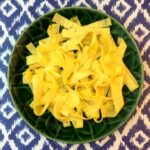Craving restaurant-quality meals without the carbs or the hefty price tag? Imagine plating vibrant, flavorful dishes – succulent steaks sizzling with perfectly balanced seasonings, crisp-tender chicken breasts bathed in luscious low-carb sauces, and colorful vegetable creations bursting with fresh herbs. This guide unveils the secrets to transforming your kitchen into a haven of delicious, low-carb culinary artistry, offering a journey through meal planning, mastering cooking techniques, and achieving restaurant-worthy presentation. Prepare to elevate your home cooking to a whole new level.
We’ll delve into the art of crafting a weekly low-carb meal plan, meticulously detailing calorie and macronutrient breakdowns to support your dietary goals. Learn to expertly cook chicken and steak, achieving textures and flavors that rival any upscale restaurant. Discover inventive ways to prepare vegetables, transforming simple ingredients into culinary masterpieces. We’ll even provide adapted recipes for popular restaurant favorites, such as pasta and pizza, showing you how to maintain taste and texture while keeping it low-carb. Finally, master the art of plating, turning your creations into visually stunning works of edible art.
Replicating Popular Restaurant Dishes Low-Carb
Transforming your favorite restaurant meals into low-carb delights at home is easier than you think. By making smart substitutions and understanding basic culinary techniques, you can enjoy rich flavors and satisfying textures without the carb overload. This section will guide you through recreating three popular dishes, showcasing how simple adjustments can make a world of difference.
Low-Carb “Pasta” Carbonara
This recipe replaces traditional pasta with zucchini noodles, creating a light yet satisfying carbonara. The creamy sauce and savory pancetta retain the classic richness of the dish, while the zucchini provides a subtle sweetness. Zucchini noodles, also known as zoodles, offer a healthy alternative to traditional pasta, significantly reducing the carbohydrate count.
- Ingredients: 2 medium zucchini, 4 slices pancetta, diced, 2 large eggs, 1/2 cup grated Parmesan cheese, 2 tablespoons heavy cream, salt and freshly ground black pepper to taste.
- Instructions:
- Spiralize the zucchini into noodles using a spiralizer or vegetable peeler.
- In a large skillet, cook the pancetta over medium heat until crispy. Remove the pancetta and set aside, leaving the rendered fat in the pan.
- In a bowl, whisk together the eggs, Parmesan cheese, and heavy cream. Season with salt and pepper.
- Add the zucchini noodles to the skillet with the pancetta fat and cook for 2-3 minutes, until slightly softened but still firm.
- Quickly pour the egg mixture over the zucchini noodles and toss constantly until the sauce thickens slightly. Be careful not to overcook the eggs.
- Stir in the crispy pancetta and serve immediately.
Spicy Shrimp Stir-Fry with Cauliflower Rice
This vibrant stir-fry uses cauliflower rice as a low-carb base, providing a satisfying texture similar to traditional rice. The shrimp cooks quickly, retaining its juicy tenderness, while the vegetables add a burst of freshness and flavor. Cauliflower rice offers a surprisingly versatile substitute for rice, easily absorbing the flavors of the stir-fry sauce.
- Ingredients: 1 head cauliflower, riced, 1 pound shrimp, peeled and deveined, 1 red bell pepper, sliced, 1 green bell pepper, sliced, 1/2 cup broccoli florets, 2 cloves garlic, minced, 2 tablespoons soy sauce (low sodium), 1 tablespoon sesame oil, 1 teaspoon red pepper flakes, 1 tablespoon cornstarch.
- Instructions:
- Rice the cauliflower using a food processor or by hand.
- Heat the sesame oil in a wok or large skillet over medium-high heat.
- Add the shrimp and cook for 2-3 minutes per side, until pink and opaque.
- Add the bell peppers, broccoli, and garlic and cook for another 3-4 minutes, until slightly tender-crisp.
- In a small bowl, whisk together the soy sauce, red pepper flakes, and cornstarch.
- Pour the sauce over the stir-fry and cook for 1-2 minutes, until the sauce thickens.
- Stir in the cauliflower rice and cook for another 2 minutes, until heated through.
- Serve immediately.
Low-Carb Pizza with Portobello Mushroom Crust
This pizza uses large portobello mushrooms as the base, providing a hearty and flavorful alternative to traditional pizza dough. The mushrooms offer a unique earthy taste that complements the toppings beautifully. Portobello mushrooms are a fantastic low-carb alternative to traditional pizza crust, providing a substantial and satisfying base.
- Ingredients: 2 large portobello mushrooms, stems removed, 1/4 cup pizza sauce (low-carb), 1/2 cup shredded mozzarella cheese, your favorite pizza toppings (e.g., pepperoni, olives, peppers).
- Instructions:
- Preheat oven to 375°F (190°C).
- Clean the portobello mushrooms and remove the stems.
- Spread a thin layer of pizza sauce over the mushroom caps.
- Sprinkle with mozzarella cheese and your desired toppings.
- Bake for 15-20 minutes, or until the cheese is melted and bubbly.
- Serve immediately.
Presentation and Plating of Low-Carb Meals

Transforming your low-carb creations from simple meals into visually stunning culinary masterpieces is surprisingly achievable. By mastering a few key plating techniques and focusing on thoughtful presentation, you can elevate your home-cooked low-carb dishes to restaurant-caliber standards. The goal isn’t just to nourish the body, but to delight the senses, making each meal an experience.
Plating techniques for low-carb meals often emphasize the natural beauty of the ingredients. Because many low-carb dishes feature vibrant vegetables and colorful proteins, the focus should be on showcasing these elements. Avoid overcrowding the plate; instead, let each component have its own space to shine.
Plating Techniques for Visual Appeal
Strategic placement of ingredients is key to creating visually appealing plates. Imagine a vibrant seared salmon fillet, its skin glistening, nestled on a bed of bright green asparagus spears. A scattering of toasted slivered almonds adds a textural element and a touch of golden brown. The salmon’s rosy hue is complemented by the asparagus’s verdant green, creating a harmonious color palette. Alternatively, consider a meticulously arranged bowl of cauliflower rice, its pearly white punctuated by the deep red of roasted cherry tomatoes and the bright yellow of sautéed bell peppers. The cauliflower rice forms a gentle mound, providing a visual base for the other elements. This creates a visually interesting composition. Think of negative space – the empty areas around the food – as just as important as the food itself. It allows the eye to rest and appreciate the individual components.
Creating Visually Appealing Low-Carb Garnishes
Garnishes are the finishing touches that elevate a dish from good to exceptional. Instead of relying on high-carb options, consider low-carb alternatives that add visual interest and subtle flavors. A sprinkle of finely chopped fresh herbs, such as parsley, chives, or dill, adds a pop of color and freshness. Thinly sliced avocado, with its creamy texture and vibrant green hue, can serve as a beautiful and flavorful garnish. A drizzle of olive oil, with its shimmering sheen, can add a touch of elegance. Even a few strategically placed toasted sesame seeds or pumpkin seeds can provide textural contrast and visual appeal. For instance, a simple steak can be transformed with a few sprigs of rosemary, artfully arranged, and a drizzle of chimichurri sauce. The deep green of the herbs contrasts beautifully against the rich brown of the steak.
Enhancing the Dining Experience with Lighting and Tableware
The right lighting and tableware can significantly enhance the overall dining experience. Soft, warm lighting creates a more intimate and inviting atmosphere, making the food appear more appetizing. Avoid harsh overhead lighting which can cast unflattering shadows. Consider using candles or strategically placed lamps to create a softer, more romantic ambiance. Choose tableware that complements the food and the overall aesthetic. A simple white plate can serve as a clean backdrop, allowing the vibrant colors of the food to stand out. Alternatively, a textured plate or a plate with a subtle design can add a touch of sophistication. The use of linen napkins and cloth placemats adds a touch of elegance and elevates the presentation. Remember, the goal is to create a harmonious and visually pleasing dining experience.
By mastering the techniques and recipes within this guide, you’ll unlock the ability to create restaurant-style low-carb meals at home, effortlessly transforming ordinary weeknights into extraordinary culinary experiences. The journey from grocery shopping to the final, beautifully plated dish is a rewarding one, filled with delicious discoveries and the satisfaction of creating healthy, flavorful meals you’ll be proud to serve. So, embrace the challenge, experiment with flavors, and savor the joy of crafting exquisite, low-carb culinary delights in the comfort of your own kitchen. The result? A healthier lifestyle, satisfied taste buds, and the admiration of your family and friends.
FAQ
Can I adapt these recipes for different dietary restrictions, such as allergies?
Many recipes can be adapted; always check ingredient lists and substitute as needed for allergies. For example, swap out nuts for seeds if you have a nut allergy.
How do I store leftover low-carb meals?
Store leftovers in airtight containers in the refrigerator for up to 3-4 days. Always allow meals to cool completely before storing.
What are some good low-carb substitutes for bread or pasta?
Cauliflower rice, zucchini noodles, and shirataki noodles are excellent low-carb substitutes for pasta. For bread, consider cloud bread or almond flour-based options.
Are there any specific kitchen tools I’ll need?
A good quality chef’s knife, a cast iron skillet, and baking sheets are helpful, but many recipes can be made with basic kitchen equipment.


